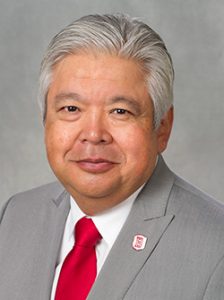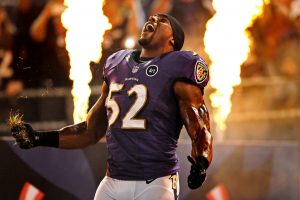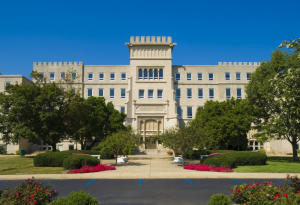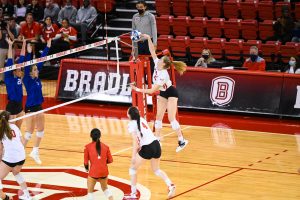In response to developing technology and decreased enrollment, Bradley has unveiled a new step in their marketing strategy, the social engagement platform InsideBradley.
Tom Richmond, executive director of Enrollment Management for Admissions, has played a vital role in developing and implementing InsideBradley.
“It’s a brand new app,” Richmond said. “The current way it’s being accessed is through web only, but as students get admitted, they’ll receive invitations to download an actual app.”
InsideBradley is aimed at finding a new way to communicate with high school students who are considering attending the university, according to Richmond.
“Many students have noticed that the university’s homepage changed over the summer,” Richmond said. “It has become outward-facing as opposed to inward-facing. The current standard is to be outward-facing so more people can find Bradley.”
InsideBradley allows users to select majors and activities they are interested in. The platform then connects them with students and features that are related to those interests.
“It’s very dynamic,” Richmond said. “After [students] are admitted, there’s the next module, which shows content for admitted students. That level will start to have features like ‘the best five pizzas in Peoria’ or ‘five things every room should have for move-in.’ We start to serve them content they are accustomed to seeing on Buzzfeed or Facebook.”
The platform has been in the works since spring 2015 when the idea was first discussed. Assistant Director of Web Content Matt Hawkins, responsible for writing online features for the app, also helped to develop it.
“Evolution Labs has handled most of the technical aspects while our team is responsible for generating Bradley-specific content,” Hawkins said. “[The company] handled most of the setup in consultation with the Bradley team.”
While InsideBradley accounts are only for prospective students, current students can access the app’s posted information on the general Bradley website.
“When you’re in [the app], you think it’s social media,” Richmond said. “But, in reality, it simply uses the things you’ve learned in social media to create an interactive website. We’re taking existing Bradley content and writing new Bradley content to speak to [prospective students].”
InsideBradley made its public debut Sept. 21.
“Bradley has a great story to tell, but the traditional website requires you to receive the information in a linear fashion,” Richmond said. “The new way of communicating is information centered on the user. To flip it around and provide dynamically served content, as opposed to a traditional website being static, is the style of social media turned into a website.”









Not clear to me that Davis was all that popular then or now. I nitecod that it’s RE Lee rather than Jefferson Davis who seems to maintain a shiny reputation, even among war buffs in the North who still admire his strategic brilliance as a general. However for me the more I learn about the Civil War the less convinced I am that it was a just or rational war for either side. I would argue that Lincoln failed dramatically to bring clever diplomacy to bear while the South hot-headedly chose to fight a losing cause, mostly in support of a profoundly immoral economic system based partly on slavery. Virginia initially voted strongly NOT to secede. Seems to me Lincoln could have taken advantage of this ambivalance and either allowed the deep south states to secede or simply waited for what would have been a meek military response without Virginia. Rather, Lincoln quickly mustered northern troops to attack, bringing Lee and other Virginians into the battle, many of whom were the masterminds behind the South’s early successes.Technology and tradition and law were in the process of making slavery obsolete, so I remain confused why so many academics seem to insist that the war was all about slavery when it’s very clear that Lincoln would have rejected a bargain where Slavery was abolished in exchange for secession. He didn’t even emancipate northern slaves! IMO the war is best described as caused by Lincoln’s obsession with keeping the union intact. I’m going to study this in more depth, but it seems to me we are in a period of odd and revisionist Civil War history where academics are sort of cleaning up after Lincoln’s incompetent handling of the war and national affairs, focusing on the importance of unification and ignoring the human and economic costs among the greatest ever paid by any nation or group in all of history. One could make a case that the benefits of getting abolition a few years earlier than otherwise outweigh the huge human and economic costs of the Civil War, but this argument needs to show freedom brought significant benefits to former slaves and to already free African Americans and to broader US interests. It’s hard to ever know if that is the case and if those benefits were greater than the massive costs of reconstruction, of 625,000 dead, and all the other ravages of a huge war. By contrast about 25,000 died in the Revolutionary War.